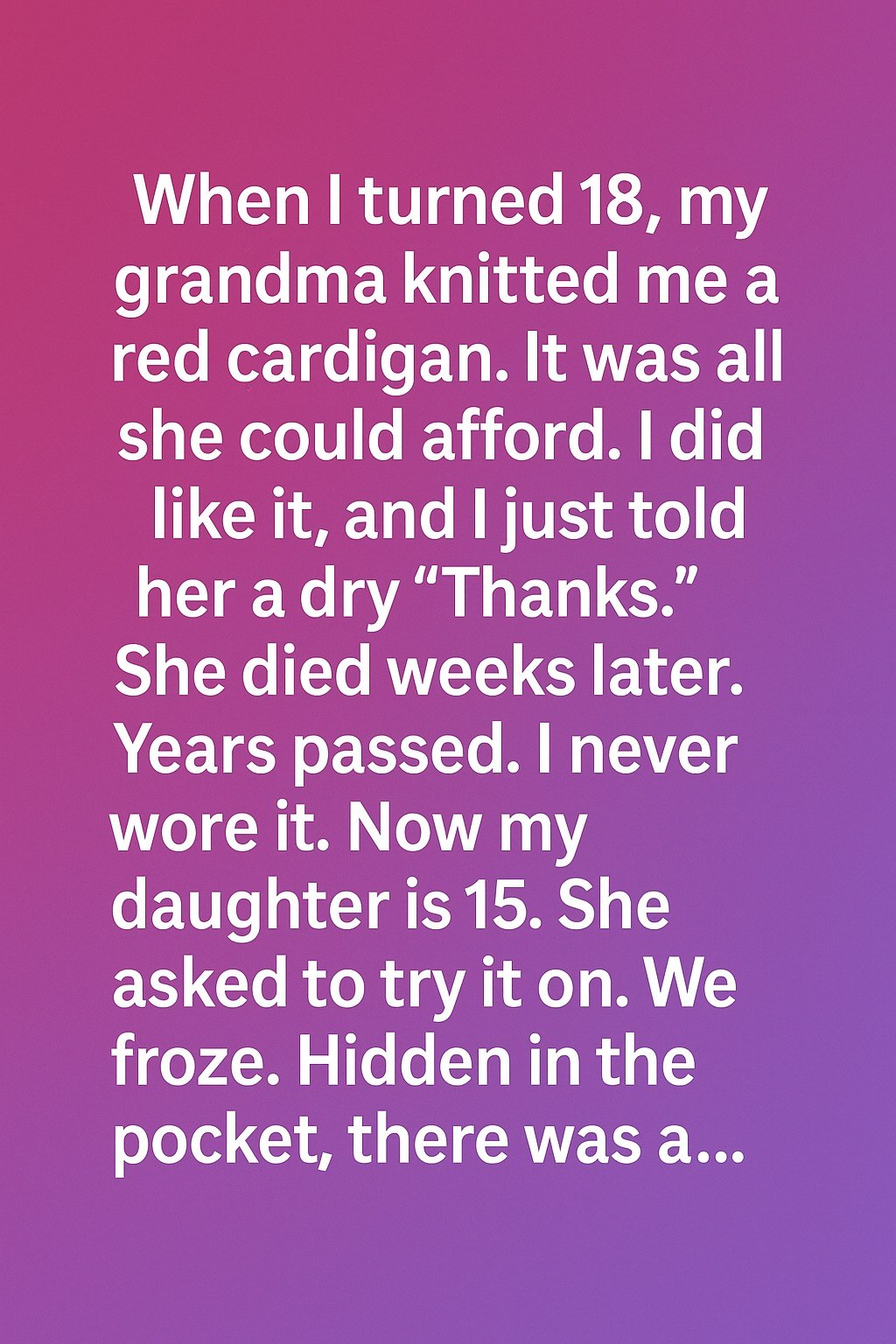My daughter slipped it on without hesitation. It hung a little loose, but she looked beautiful—the same spark in her eyes that my grandmother had. “It’s really pretty,” she said, spinning in front of the mirror. Then she reached into one of the pockets and frowned. “Mom… there’s something inside.”
My heart raced as I walked over. She handed me a small, yellowed piece of paper folded several times. The edges were worn, the ink faint, but I recognized the handwriting immediately.
It was my grandmother’s.
I unfolded it with trembling hands. Inside were just a few words, written in her elegant cursive:
“For my sweet girl, may this keep you warm when I no longer can. Always remember how deeply you are loved.”
For a long moment, I couldn’t speak. My daughter looked at me, eyes wide with curiosity, and I felt a wave of emotion rise up—grief, love, regret—all tangled together. I had spent years avoiding that cardigan, never realizing it had been carrying her love all along.
Tears streamed down my face before I even noticed. My daughter reached for my hand. “She wrote that for you?”
I nodded. “Yes. She must have tucked it in there before she gave it to me.”
We stood together—three generations connected through one simple red sweater and a few fading words. My grandmother hadn’t just made me a cardigan. She had left a message, patiently waiting for the right moment to be found.
That evening, my daughter and I sat on the couch, the cardigan across both our laps. I told her stories about my grandmother—how she made pies from scratch without measuring, how she sang while folding laundry, how she always said that kindness was the only true inheritance. My daughter listened quietly, the cardigan pulled snug around her shoulders.
“She sounds amazing,” she said softly.
“She was,” I replied. “And stubborn as hell.” We laughed through our tears.
From that day on, the cardigan didn’t stay hidden anymore. My daughter began wearing it regularly—to school, coffee shops, and chilly walks with me. It suited her in ways I hadn’t expected, as if the sweater had found its new home. Every time I saw her wearing it, I felt a quiet peace.
One evening, I found her on her bed, carefully holding the note. “I don’t want to lose this,” she said.
“You won’t,” I told her. “It’s part of you now. Just like it’s part of me.”
I realized then that love doesn’t disappear when someone dies. It shifts, transforms, and hides in unexpected places—in an old cardigan, a handwritten note, or the stories we pass down. It lingers in our habits, recipes, and the warmth we give others.
For years, I thought the cardigan was a symbol of guilt—a reminder of what I hadn’t said. But now I understand it was never about regret. It was about continuity. My grandmother’s love didn’t vanish. It simply changed shape, waiting to find its way back to me—and now, to my daughter.
Sometimes I catch my daughter curled up with the cardigan, reading or scrolling on her phone, and I can almost see my grandmother beside her, smiling. The yarn may be frayed, the note fragile, but the message remains: love endures.
Every stitch carries a heartbeat, every thread a reminder. My grandmother’s hands may be gone, but her warmth lives on—wrapped around the shoulders of the next generation.
The red cardigan isn’t just clothing anymore. It’s a legacy—a connection that bridges past and present, loss and love, guilt and grace. It reminds me that what we give from the heart never truly fades. It waits to be rediscovered, to comfort someone new when they need it most.
And one day, when my daughter passes it on, I hope she leaves her own note in the pocket—so the love stitched into that old red cardigan keeps traveling forward, generation after generation, like a quiet promise that never breaks.

